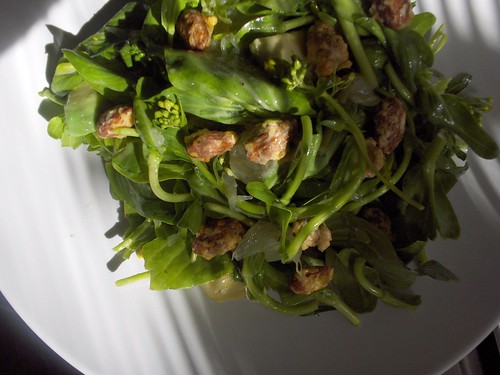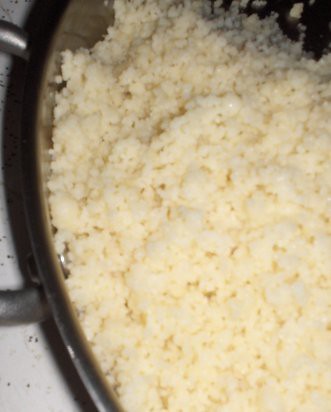
The rain is back. It’s been crisp and sunny lately, almost t-shirt weather—not quite cold but not too hot either. Just the other day I saw some geese waddling around the pond near my work. A cozy duck couple have been sunbathing on the grass, napping lazily with their bills tucked into their wings. This morning the sky was drab as a Soviet era apartment building. And asphalt looks so depressing when it’s wet.
I wonder if this weather means no more green garlic at the market? Fewer pastured eggs? Less flavorful goat cheese? Just as I had begun to crave salads and cool watermelon with feta cheese, must I turn my appetite back to hot soups and heavy stews? While Nature vacillates between renewal and hibernation, the natural world can’t decide whether to bloom or go back to sleep for the winter. It’s enough to force a person to eat bread and water in utter seasonal confusion.
But a person cannot live on bread alone. And if this damn weather keeps harking back to winter, what can you do but create your own spring?
bok choy flowers with grapefruit jewels
At the farmers market, I came across tiny little bok choy greens crowned by tinier butter-yellow flowers. The crisp greens are the backdrop to bittersweet, soft fillets of oro blanco grapefruit, which in turn, cut the plump creaminess of the avocado pieces. Candied almonds bring it all together with their sweet crunch. The tiny bok choy buds bring spring indoors, even if the weather says otherwise. The pale gold grapefruit segments are jewels of sunlight shimmering through leafy bok choy branches.
3 handfuls flowering bok choy or other mild greens, coarsely chopped
1 oro blanco grapefruit or small pomelo, filleted
1/2-3/4 of an avocado
olive oil
salt and pepper
mandarin orange roasted almonds, or other candied almonds
- In a large bowl, combine the bok choy with the grapefruit.
- Cut the avocado in half and remove the pit.
- Make lengthwise cuts in the avocado, cutting down to but not through the skin.
- Make two crosswise cuts in the avocado, cutting the lengthwise slices into thirds.
- Turn the skin of the avocado inside out and push out the slices with your finger or the end of your knife.
- Combine the avocado with the greens and fruit.
- Pour over olive oil and season to taste with salt and pepper, toss to combine.
- Plate and garnish with candied almonds.
Serves 2-3


